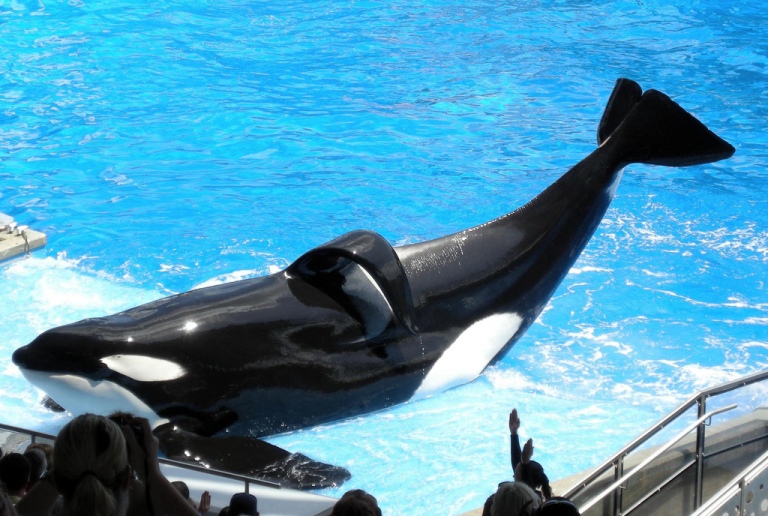 For our ColLab, we watched a documentary called Blackfish. About the captures and deadly encounters with orca whales. The movie focuses on one whale specifically, named Tilikum, who attacked and killed 3 people – two of whom were experienced trainers – in 1991, 1999, and 2010, respectively. His violent behavior is thought to have originated from his treatment in captivity, and all the frustration it has caused him. Although there have been many legal cases against Sea World, Tilikum still performs in Orlando.
For our ColLab, we watched a documentary called Blackfish. About the captures and deadly encounters with orca whales. The movie focuses on one whale specifically, named Tilikum, who attacked and killed 3 people – two of whom were experienced trainers – in 1991, 1999, and 2010, respectively. His violent behavior is thought to have originated from his treatment in captivity, and all the frustration it has caused him. Although there have been many legal cases against Sea World, Tilikum still performs in Orlando.
Before watching the movie, I felt indifferent about Sea World, but now I dislike their organization (although I have to say, the movie tried to make them seem really evil). I still have lots of respect for most trainers as they work hard and care about the animals. I don’t believe that it would be possible for a completely safe workplace to exist, when involved with such large animals like killer whales. Things like having a larger tank with plenty of food and careful treatment may definitely lower the risk of an attack, but ultimately, it is captivity that causes the animals’ frustration. It is good to know that Sea World is no longer capturing or breeding any more orcas.
_______________________________________________________
Oil spills are usually massive, and very harmful to the environment. This pollution latches onto and kills many animals, and is very hard to clean up. Many are actively trying to cleanup existing oil spills, while scientists are researching on new ways to clean up and prevent oil spills.
Booms are floating barriers to keep oil in place. They could either be spongy, absorbing the oil, or be hard with “skirts” under water. The three types are called sorbent booms, hard booms, and fire booms. Skimmers are boats or other devices that could be used to clean up oil on the surface using booms.
Another method of cleanup is called situ burning is sometimes used after containment using a boom. It is used with fresh oil in calm weather.
NOAA. Spill Containment Methods | response.restoration.noaa.gov. Retrieved May 17, 2016, from http://response.restoration.noaa.gov/oil-and-chemical-spills/oil-spills/spill-containment-methods.html